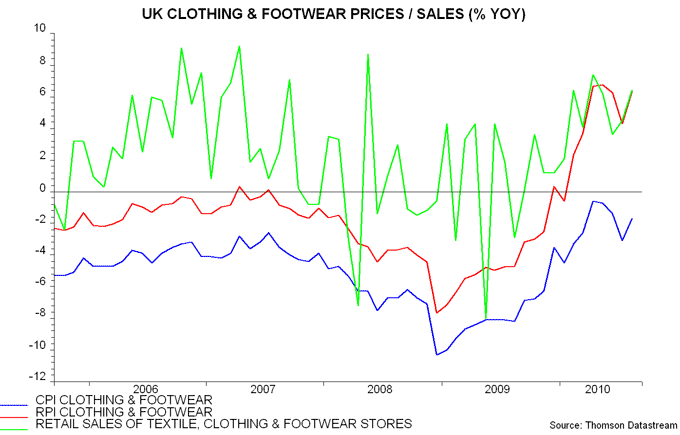More on UK CPI clothing distortion
According to the CPI, clothing and footwear prices fell by 1.7% in the year to August. The alternative RPI clothing and footwear index, by contrast, rose by 6.3%. The difference is large enough to affect an assessment of economy-wide inflation – the headline 12-month CPI rise would have been 3.5-3.6% rather than 3.1% in August if the clothing and footwear component had matched the increase in the RPI measure.
The technical explanation for the difference is that the CPI uses geometric averaging to combine price movements of individual items, while the RPI uses arithmetic averaging. A non-technical explanation is that the CPI assumes that consumers are expert at shopping around for best value – so expert that they can obtain the same volume of clothing and footwear as a year ago while reducing their spending by 1.7%, despite a 6.3% rise in label prices.
This stretches credulity. If the same volume could be bought for 1.7% less, it would be reasonable to expect total cash spending on clothing and footwear to be little changed from a year ago. Retail sales figures, however, show a 6.4% rise in turnover in textile, clothing and footwear stores in the year to August. Based on the 1.7% CPI fall, this suggests an increase of 8.2% in the volume of purchases – implausible when overall consumer spending has been growing weakly.
While difficult to prove, the 6.4% rise in cash spending is likely to have been driven by higher unit costs rather than a surge in consumer demand for clothing and footwear. The 6.3% increase in the RPI clothing and footwear index, in other words, is probably a better reflection of consumers' experience than the 1.7% decline in the CPI measure, in turn implying that the headline CPI understates true cost of living inflation.


Reader Comments